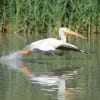 By Jim Stevenson
By Jim Stevenson
Some of you have requested pictures of birds found in locations of trips we are planning. Our South Texas (Valley) Trip in late January (one week before the Super Bowl) leaves early Thursday morning and returns Sunday night. IF YOU ARE INTERESTED IN THIS TRIP, PLEASE LET ME KNOW SOON. Thank you all who participated in the questionnaire RE the GOS and my duties. There were some good and valid points made and I am still evaluating others, while waiting for the late ones to roll in. Mucho appreciado! We still have quite a few people who haven’t send in checks for the “calendar” sale. We look forward to it.
I have listed here a few pictures of my few days at the Great Salt Lake back in August. After meeting with officials, I will be writing “Birds of the Great Salt Lake,” and am very excited about it!
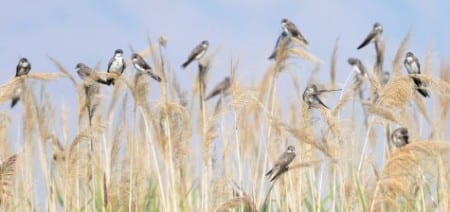
The Great Salt Lake, with clouds of “bugs” like blind (male) mosquitoes, attracts swallow species by the gadzooks. These are Bank Swallows, a fairly common but often overlooked bird in much of the Lower 48. They are a smallish, gray species but have a dark breast-band that’s diagnostic. These are usually seen early in the fall migration but relatively late in spring.
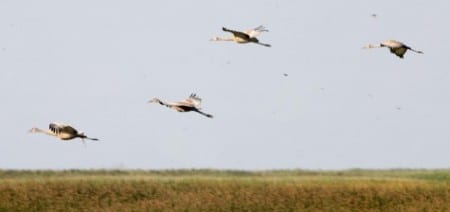
Sandhill Cranes nest around the GSL but others migrate through and a few even winter there. It’s a lot like mockingbird populations here on the Texas Coast, and other species as well. They fly with their head and neck outstretched, much like storks, ibis and spoonbills. This was a family with two chicks, reminding me of kids in their 20s still living at home.
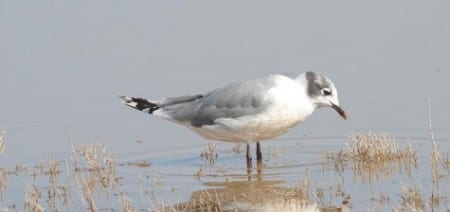
Franklin’s Gulls nest in huge numbers around the GSL and by August (when I was there) they have lost their black heads (like our Laughing Gulls). Most of our fall Franklin’s are first-year birds with brown in the mantle, but this is a clean adult. You can also see the smallish bill and the large, white spots in the primaries, assuring you this isn’t Utah’s first-ever Laughing Gull!
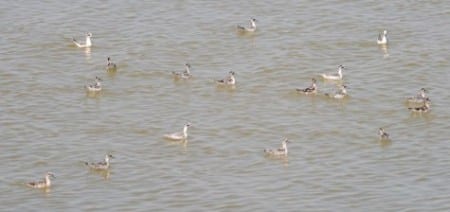
Phalaropes are swimming shorebirds most of the time, spinning and dabbing for insect larvae and such. If you look carefully at these basic-plumaged birds, you’ll see there are two species: Red-necked and Wilson’s Phalaropes. Why don’t you see if you can use the field guide and figger out which is which? It’s obvious there are two different species.
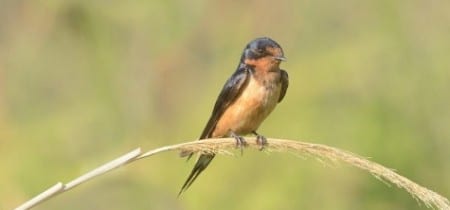
Barn Swallows are familiar to us all, as they are seen more than any other swallow. The long, forked tail instantly identifies them from any other small bird, and the beige underside is quite apart from other swallows. These and Cliff Swallows are increasing big-time, partly due to the successful reproduction under overpasses.
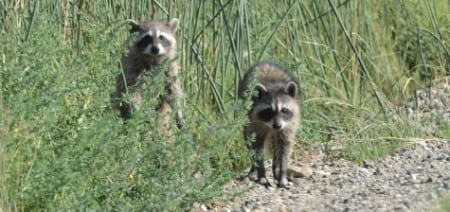
Raccoons often live around water, feeding on everything from birds’ eggs to crayfish. They are quite bright and adaptable, surviving well even around human habitation. Coons seem like sweet little fellas but they can be vicious, wicked predators when cornered. Tame coons should be given a wide berth as they can carry rabies.
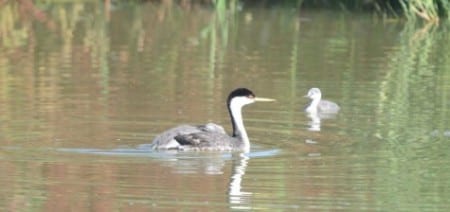
Several grebe species will nest at the GSL but none is more conspicuous than mighty Western Grebes. This parent is training its chick to fish, and the youngster looks to be about five weeks old. Its sibling is sitting on the parent’s back, probably worn out from diving. The very similar Clark’s Grebe has white around the eye, a relatively new-described species.
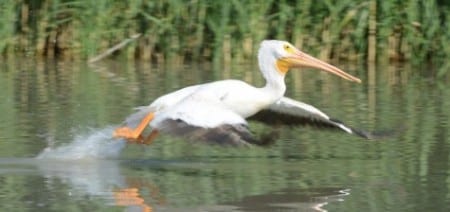
White Pelicans nest in huge numbers at the GSL, taking advantage of the introduced carp. They take off by jumping repeatedly on their massive feet, both feet at a time. It’s really different from most diving birds like coots, that alternate feet while getting airborne. Being so heavy, they have black secondaries as well as primaries, to cut down on wear.
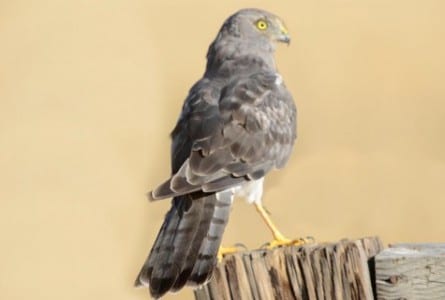
Adult male harriers don’t look a thing like females and immatures, being steel gray. They nest along the Lake’s shore, where they are supposed to be. However, they also nest by my house, where they don’t belong in summer. Lesson to photographers- don’t focus on the back when the bird is facing away. That makes the noggin out of focus. Not enough depth of field.
(published 10/14/2014)

 Posted in
Posted in 























